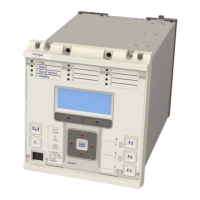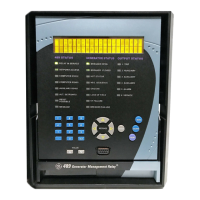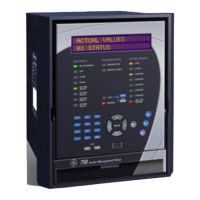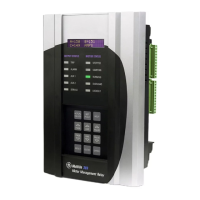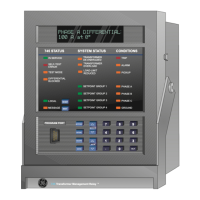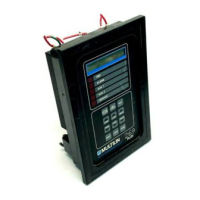Appendix B -Settings and Signals
MENU TEXT COL ROW DEFAULT SETTING AVAILABLE OPTIONS
DESCRIPTION
20-A
1-B
2-B
3-B
4-B
5-B
6-B
7-B
8-B
9-B
10-B
11-B
12-B
13-B
14-B
15-B
16-B
17-B
18-B
19-B
20-B
1-C
2-C
3-C
4-C
5-C
6-C
7-C
8-C
9-C
10-C
11-C
12-C
13-C
14-C
15-C
16-C
17-C
18-C
19-C
20-C
Setting for the unique relay address that is encoded in the Differential message and in the InterMiCOM64 sent message. The aim of setting
the address is to establish pairs of relays which will only communicate with each other. Should an inadvertent fiber/MUX misrouting or
spurious loopback occur, an error will be logged, and the erroneous received data will be rejected.
As an example, in a 2 ended scheme the following address setting would be correct:
Local relay: 1-A
Remote relay: 1-B
Address 0-0 is a universal address, whereby any relay will be free to communicate with any other (equivalent to disabling of the unique
addressing). When PROT COMMS/IM64 is set to loop back mode, the address 0-0 will replace any existing address in the relay.
Comms Mode 20 10 Standard
IEEE C37.94
Setting that defines the data format that will be transmitted on the fiber outputs from the relay.
If the Multiplexer accepts direct fiber inputs according to IEEE C37.94, the ‘IEEE C37.94’ setting is selected.
For a direct fiber link between relays, and where the MUX connection is in electrical format (G.703 or V.35 or X.21), the ‘Standard’ message
format needs to be set.
For a setting change to take effect, rebooting of the relay will be required. The Comm Mode setting applies to both channels.
Baud Rate Ch1 20 11 64kbits/s
56kbits/s
Channel 1 data rate setting for signalling between ends. The setting will depend on the MUX electrical interface, set 64kbit/s for G.703 and
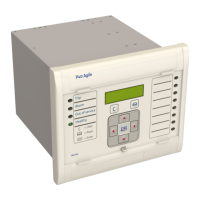
